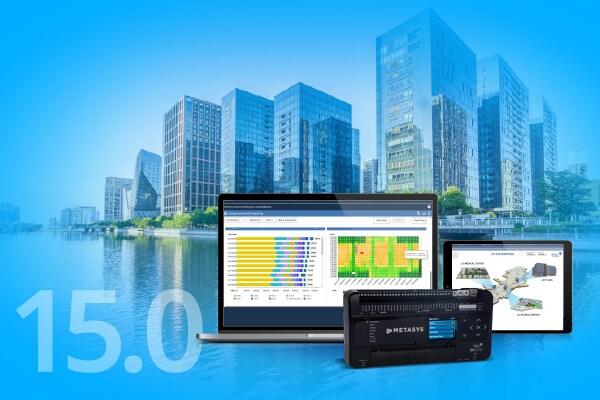Reducing Disruptions With Rooftop Twinning
Masterless Twinning Removes Points of Failure
In the ideal twinning scenario, each unit has complete knowledge of the other systems’ operating parameters and executes the same control algorithm independently. In a traditional twinned configuration, a “master” controller (external controller, rooftop unit or building automation system) communicates the parameters to every other unit in the system. For example, a duct pressure sensor in the master unit controls that unit’s supply fan while also communicating the fan speed to every other satellite unit in the twinned system. While this is often the most cost-effective arrangement, any failure in the master unit can impact the satellite units.
An effective way of avoiding potential master/satellite failure points is to implement a strategy known as masterless (or “independent”) twinning. In a masterless configuration, key operating parameters operate in synchrony, while other systems remain independent. In this scenario, each twinned unit sends the critical operating parameters to the other units in the group. Every unit receives the same instructions but executes them independently. This can help eliminate the cascade effects of individual communication or sensor failures and is considered less complex than master/satellite configurations, in general.
What to Know Before Going Masterless
As noted, masterless (or independent) twinning shares sensor values across all the rooftop units in the system. This can help remove points of failure and can reduce total costs by sharing optional features among the units. This arrangement can also share setpoints, provide simple configuration and can even provide quicker unit response time vs. master-dependent systems. Each unit in the system should have its own sensors to help maximize the ability of the system to operate independently in the event of a unit failure.
Twinning can provide notable benefits in capacity, redundancy, operation and maintenance. The Johnson Controls portfolio of high-performance rooftop units provides a variety of options for unit twinning, with the right method depending on your individual project size, complexity and installation requirements. To learn more about rooftop twinning, download your free copy of the complete Variable Air Volume (VAV) Application Guide for Rooftop Units.

















.jpg?la=en&h=320&w=720&hash=244C75B74F0F77521D56164450973BCD)






































